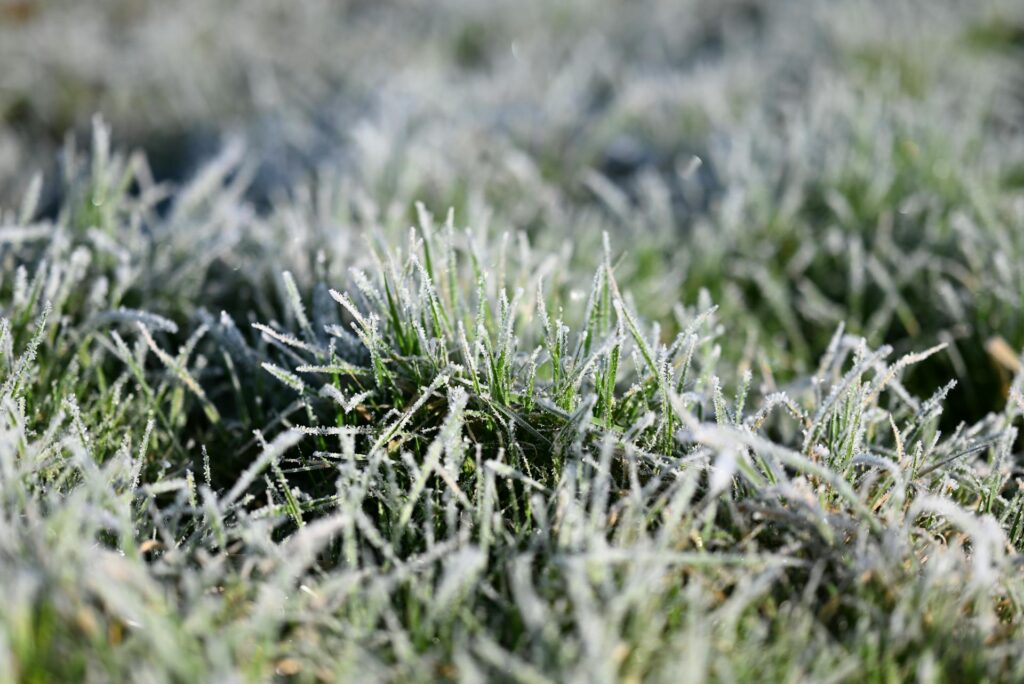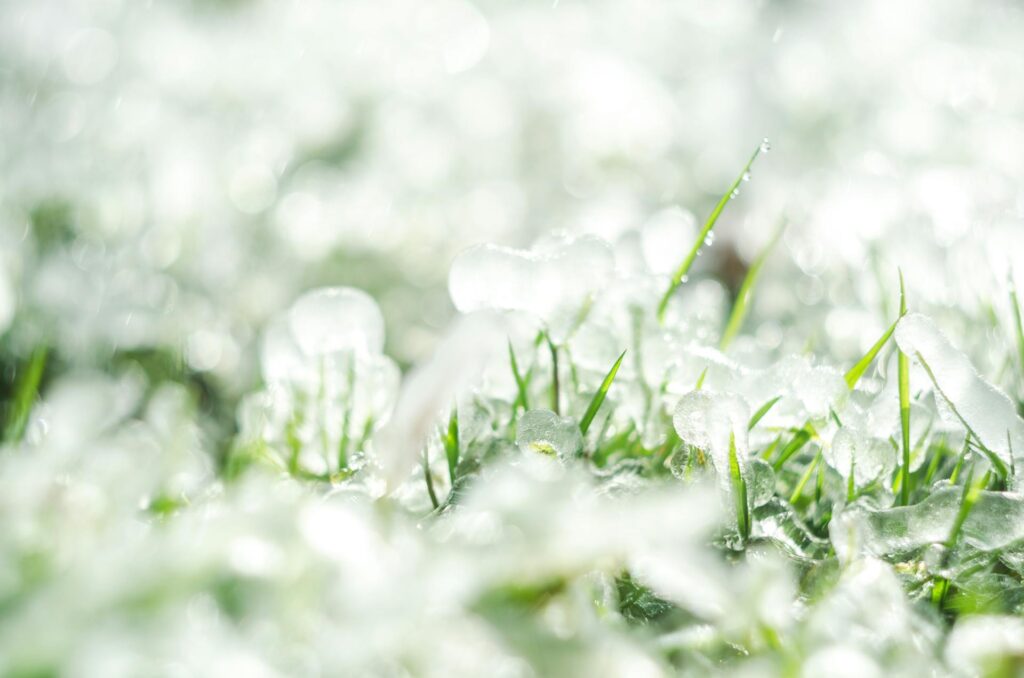Protect Your Grass From Snow, Freezes & More
Winter is coming. Your grass is winding down, but you’re not finished yet. What you do during the pre-deep-freeze period makes a big difference for next spring’s lawn.
A well-prepped lawn in autumn translates into a healthier, greener lawn down the line. It’s simple. Miss out on these winter lawn care steps, and you’ll be left with an uneven lawn that’s annoying to repair.
Here’s what to do prior to the first frost and how to ready for the coming cold winter months.
Timing for Winter Lawn Preparation
North/Midwest: Lawns in this section of the country (Ohio and Michigan) get an honest winter. Start early to mid-fall. Preferably finish big tasks like aeration and fertilizing two to three weeks before the ground freezes.
South: Warm-season grass lawns go dormant after the first frost. Try to finish your prep in late fall. And stop high-nitrogen fertilizer well before dormancy. It grows new tissue susceptible to cold.
Transition Zones: Your timing depends on what type of grass you have and when frost strikes. You’ll often be forced to blend practices from cool- and warm-season care.

How Can Lawns Be Harmed in Winter?
Snow, ice storms, and freezing temperatures can really hurt your yard if you’re not careful. Here’s what might pop up.
- Desiccation: This is a kind of winter burn during which wind pulls water off of the grass. Water the lawn heavily during fall so the lawn has water it needs.
- Snow Mold: It manifests in round, matted areas after snow melt. To prevent it, make your final mow slightly shorter and have your lawn well-drained.
- Ice Damage: A layer of solid ice will suffocate your lawn. Try to keep puddles from forming on the grass before freezing.
- Crown Hydration: This damage occurs when there are brief winter thaws. The grass comes back to life and absorbs water. If the weather subsequently cools, that water freezes inside the plant. It grows and cracks the crown. You can prevent this by reducing late-season watering.
Midwest Winter Lawn Care To-Dos
1. Aerate the Lawn
Aeration helps your lawn breathe. It lets water, fertilizer, and air soak into the roots of your grass because soil does compact eventually. When that happens, roots can’t breathe or grow effectively.
The main benefit is to alleviate that compaction in the ground. It also lets your lawn absorb winter fertilizer and water more effectively.
Try to aerate before the first frost, when the soil is still soft enough to till. Just don’t do it when the soil is frozen. It will ruin grass crowns and cause more harm than good.
2. The Last Mow of the Season
Your final mow of the year is critical. The goal is to not cut the grass too high or too short.
For cool-season grasses like Kentucky bluegrass or fescue, mow at 2–2.5 inches. A very little bit shorter cut in cold climates will decrease the chances of snow mold.
Always remember the one-third rule. Never take off more than one-third of the blade of grass in one mowing. If it is too tall, just lower the blade slowly over your next few mows.
After that final mow, it’s the perfect time for mower maintenance.
- Drain the gas or use a stabilizer.
- Clean off any stuck-on grass clippings.
- And don’t forget to sharpen the blades. A clean cut is much healthier for your grass and helps prevent disease.
Doing this now means you’ll be all set for a smooth start next spring.
3. Fertilize with a Winterizer
Winterizer is not the same as your summer fertilizer blend. It’s formulated to work on the roots, not leaf blades.
Utilize a blend that’s higher in potassium and lower in nitrogen. Potassium hardens the plant, allowing it to withstand cold and disease better. Too much nitrogen encourages slender new growth prone to being killed by frost.
The grass stores these nutrients in its roots. It gives it a huge head start when springtime rolls around and it’s time to grow.
For best performance, apply fertilizer as soon after aerating as possible. And under no circumstances whatever should you fertilize when the soil is frozen. The roots are in dormant state and are unable to absorb the nutrients.
4. Add Mulched Leaves or Compost
Once you’ve aerated, provide the lawn with a light application of compost or mulched leaves.
Compost delivers slow-release nutrients and helps the soil hold water. Mulched leaves cost nothing and are an organic option. It’s easier to do than raking, too. Just mow over the leaves a few times to shred them into tiny pieces. They’ll break down over winter.
The key is to make sure the leaves are properly mulched. Big, whole leaves will pack down onto one another and kill the grass underneath.

Additional Winter Tips for Northern Lawns
Shut Down & Check Your Irrigation
If you have a sprinkler system, you must winterize it. It is also a smart time to study replacing your controller with a smart controller next year.
Minimize Foot Traffic
Avoid walking on your lawn when it is freezing. The cold blades of grass are brittle and will break apart at the touch. All this traffic now will cause apparent damage when spring arrives.
Pick Up the Yard
Rake off dense piles of leaves and other debris. This stops mold and keeps pests from moving in. Make sure to gather furniture, toys, or stacks of firewood off the lawn, as well.
Be Smart About Ice Melt
If you have to melt ice from your sidewalks, use a product that’s “safe for lawns.” Ordinary rock salt damages your lawn and will kill surrounding trees and shrubs. Calcium or magnesium chloride-containing products are usually the way to go.
Typical Mistakes Homeowners Make With Their Yards
It’s easy to make a few big mistakes that ruin your lawn in just one season. Do your best to remember these.
- Skipping Aeration: Without aerating, the ground gets too hard. The ground is so hard that the roots can’t even make the most of a winter fertilizer.
- Fertilizing Too Late: Too late in the season, using high-nitrogen fertilizer encourages new growth that is killed off by the cold.
- Overseeding Too Late: When you plant new seed too close to frost, it won’t have time to set solid roots before winter.
- Forgetting to Test the Soil: Grass needs a particular pH for the soil to help grass the most. Not testing for it is a lost opportunity.
- Leaving Trash Out: Heaps of rubbish such as pet toys, furniture, and heavy blankets of leaves left outside all winter will strangle the grass and produce ugly, dead patches.
Why Choose Professional Lawn Care In Winter?
You can do most of the winter lawn work yourself, especially if you have a small lawn, enjoy doing this kind of work, and already have the basic equipment.
But you may want to hire a professional if any of the following are true:
- The soil is hardened or you have not aerated in years. Heavily compacted soil does not take a half-hearted approach. It takes the right equipment and method to truly break through and make an impact.
- You just don’t have the time or aren’t physically able. With work, family, and all the rest, sometimes calling in a pro is just the easiest way to go. And why risk injuring yourself?
- You’ve got a big lawn. Once you’re dealing with a big piece of property, time and labor simply get added up. What a pro would be able to do in an hour would take you a whole day, and that’s just in the event that everything went absolutely perfectly.
- You’re seeing signs of bigger problems. If you see lawn disease, ugly patches of grass, or damaging pests, call us right away. Those need to be diagnosed and treated, not guessed at. A professional can tell you exactly what’s going on and fix it before it gets worse.
Take Care of Your Lawn This Winter
Winter lawn care in Michigan and Ohio doesn’t have to be complicated or stressful. Whether you’re looking for help prepping the soil before that first freeze, keeping your grass alive through colder temps, or just getting a jump-start on planning for spring, we’re here to help.
Contact NexGreen, and allow us to handle the winter lawn care so that you don’t have to. We offer lawn care services in Ohio communities around the areas of Westerville, OH and Columbus, OH.
We also provide pest control and lawn care services in Michigan for areas near Sterling Heights, MI and Rochester Mills, MI.

